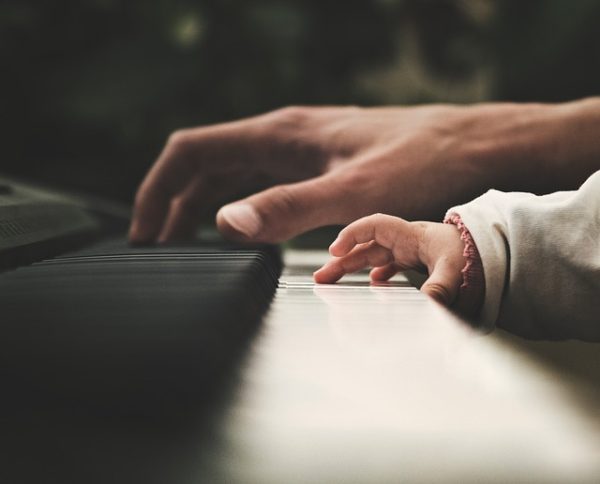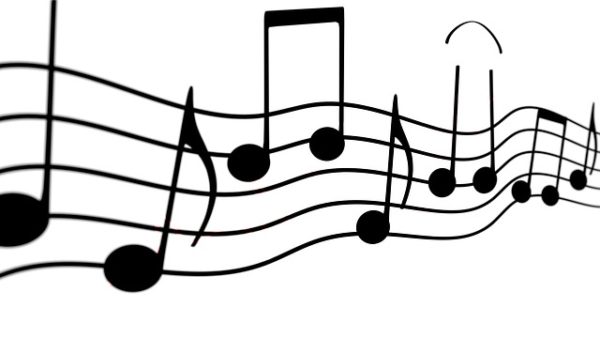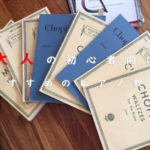ピアノを演奏していて、ふとしたところで手が届かないと感じたことはありませんか?
今回はそんなときに実践してほしいやり方を紹介します。
手の形は人それぞれ

当たり前のことですが、人の手の形には個人差があります。
手を限界まで開いたときに、鍵盤のドから1オクターブ飛んだソまで届く人もいます。(もっと先もきっといるでしょう)大きな手を持っている人はピアノの演奏に置いては非常に幸運な持ち主かもしれません。
手そのものの大きさだけでなく、指の長さも人によって違います。親指から小指の先まで広く広げることができる人は、鍵盤の移動や音符が多い和音も難なく弾けることでしょう。
しかしそんな人ばかりではありません。鍵盤のドから一番近いソが限界という人も当然います。
ラフマニノフやリストの曲にはドから1オクターブ先のドより右側の鍵盤を同時に弾く和音が連続して出てくるものがあります。これらはどうしても体の特性上弾けないような人がいるのは事実です。
私はオクターブの和音はギリギリ演奏できるぐらいの手の大きさですが、親しい友人でほとんど同じ大きさの手でも届かないという人もいます。手の大きさが大きくても、手のひらが大きくて、指が小さいと届く範囲が小さくなっていくのです。
手が小さいピアニスト

スペインの有名なピアニストでアリシア・デ・ラローチャという女性がいました。
彼女は非常に小さい手でありながら、イサーク・アルベニスのイベリアのような非常に難しい曲を演奏することができました。彼女は当然ながら範囲の広い和音を弾くことができなかったため、アルペッジョ(アルペジオ)、つまり分散和音(詳しくは後述)の形で演奏したり、最初にベースとなる部分を演奏して、残りの部分をすばやく演奏したりして調整していました。
いずれにしろ彼女は手が小さいことでピアニストとしての地位が下がることはなかったのです。
手が大きい人は幸運にも難しい曲を原曲のまま弾くことができます。
しかし、手が小さいからとその曲を投げ出す必要はありません。やり方を工夫することできちんとした曲にアレンジすることができるのです。
3つのストレッチで弾きやすくする

まずは原曲のまま弾くことに努めましょう。
ストレッチをして、筋肉をほぐすことで今まで届かなかった音が届くようになったり、引きやすくなったりします。
スポーツする前に準備運動をするように、ピアノ演奏の前に必ずやるようにしましょう。毎日お風呂に入っているときにやるのも効果的です。
①指を広げる
指の筋肉を柔らかくするために、指と指の間の間隔を広げます。
壁や反対の手を使いながら最初は親指と人差し指の間から、次に人差し指と中指、、、と順番にグググっと広げましょう。指と指の間にボールのようなものを挟むのも効果的です。
親指と人差し指は最初から十分に広げることができるはずですが、より広げるストレッチをしていくことで、指をくぐらせることが簡単になってきます。
②指を反らす
まずは手をパーにして、ものに頼らずに思いっきり指を広げながら反らしましょう。
次に親指から小指までを、地面や反対の手を使って1本ずつゆっくり反らしていきます。
少し痛気持ちいいぐらいの反らせ方で止めましょう。あまりやりすぎると筋を痛めてしまう原因になります。
③関節をほぐす
指の関節も重要です。関節が柔軟に動くか否かでも和音の弾きやすさが大きく変わってきます。
親指から小指まですべての指の関節を、反対の手で軽く押さえながらグリグリとマッサージしましょう。
関節に刺激を与えることで、筋肉をほぐし、血流を良くする効果があります。
曲をアレンジする

どんなにストレッチをしても無理なものは無理という状況に陥ってしまったら、思い切って曲をアレンジしましょう。苦し紛れにテンポを乱しながら原曲を弾いてストレスを溜めるよりも、アレンジして気持ちよく曲を演奏したほうがモチベーションも上がります。
①アルペッジョで演奏する
アルペッジョとは分散和音のことを言います。
これはその名の通り、和音を分散させたものです。例えば4分音符の「ド・ミ・ソ」3和音があれば、それを3連符の「ド→ミ→ソ」とすることです。
アルペッジョはアレンジ次第で様々な形に変化させることができます。これは和音を単音に分けてもとの音符の長さになるように調整することがスタンダードです。
ポイントは音を離さずにつなげながら、かつテンポを維持しながら演奏することです。
なれるまではテンポを落として、ゆっくりその部分だけを、片手だけから練習するようにしましょう。
②音を省略する
思い切って音を減らしてみましょう。
とはいえ、これは実はやり方が難しく、間違えると曲の雰囲気がガラッと変わってしまうため、あまりオススメはしません。しかしどうしても弾くことができない場合の選択肢の1つとしては考えてもいいでしょう。
和音の一部を省略する場合は一番高い音が対象になりやすいです。
理由は一番低い音は根音(こんおん)といって、和音の土台をつくっている場合が多いからです。
例えば「ド・ミ・ソ」の3和音が届かない場合は思い切って「ド・ミ」にしてしまいます。
最後に
アリシア・デ・ラローチャのように、手や指の大きさが小さくてもやり方しだいでピアニストとして十二分に活躍できるのです。手が届かなくとも、諦めずにやり方を工夫してみましょう。1つ1つ壁を越えていくことで自信がつき、もっとピアノが楽しくなるでしょう。
▼コチラの記事もおすすめ

コメントを残す